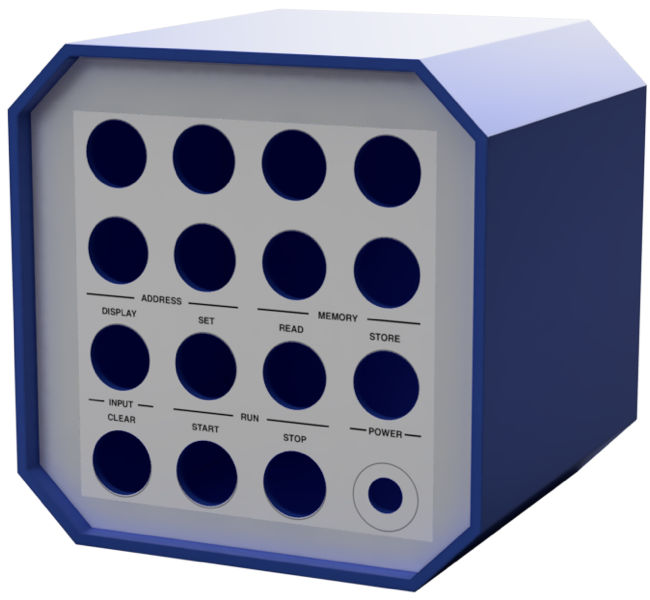
ilo sona sama pi ilo sona nanpa wan “Kenbak-1”
ni li ilo sona nanpa wan mi.
Prizes
- First prize in “Senior Solo” category at the 2018 Monts’ Young Inventors and Creators Show: 300 € given by the UTAI, 300 € given by STMicroelectronics and a gold medal of the Concours Lépine. Showcased alongside The Simple 4-Bit Computer and the GilDev Breadboard Computer projects
- Participation at the Prix Jean Luthier of the Tours University
Informations
- Project’s specifications (in French)
- Presentation poster for Monts’ Show (in French)
- Presentation poster for school (in French)
- Simplified programming manual to program the replica (in French)
- D1R1: documentary research used to write the D2R2 (in French)
- D2R2: report on the question “How does microcontrollers and microprocessors work and how did they revolutionize modern computing?” (in French)
- Presentation slideshow of the D2R2 (in French)
- GitHub repo (MIT license)

lipu lili mute
The Kenbak-1 is the world’s first personal computer in the world, born 4 years before the Altair 8800, and that you probably never heard of. I ran across it randomly while searching for a simple vintage computer with LED and switches that I could easily write an Arduino emulator for, since this is the first emulator I wrote.
I discovered the Kenbak-1 just before my high school ending exams (which impacted my revisions quite a bit… 😃) and I fell in love with it! ❤️ Its design, its simplicity, its clear instruction set well separated by octal digits are many reasons that make me like this computer.
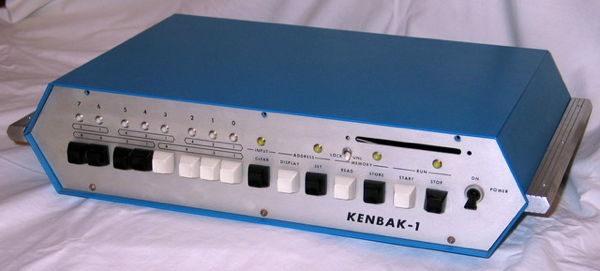
The Kenbak-1 was designed and marketed by John Blankenbaker in 1971. The first microprocessor, the Intel 4004, was also marketed in 1971. Thus, the Kenbak-1 doesn’t have a microprocessor and all the logic was implemented with TTL logic integrated circuits. In fact, you can find all the logic schemas in the book “Theory of Operation”.

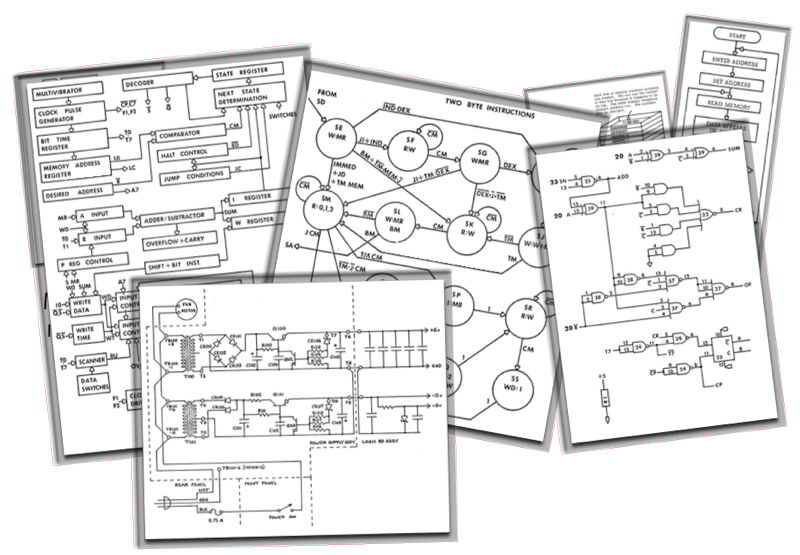
With a device as attractive as the Kenbak-1, I needed one! Sadly, a bit less than 50 devices were made in total, before Kenbak Corporation ended. In 2015, a Kenbak-1 was sold at an auction for more than $40,000! I must tell you I’m not able to afford it… 😥
Now I just have to make a replica. Grant Stockly made real replicas at some point, but he’s not giving any sign of life and his replicas cost several hundred dollars because they were identical to the original Kenbak-1.
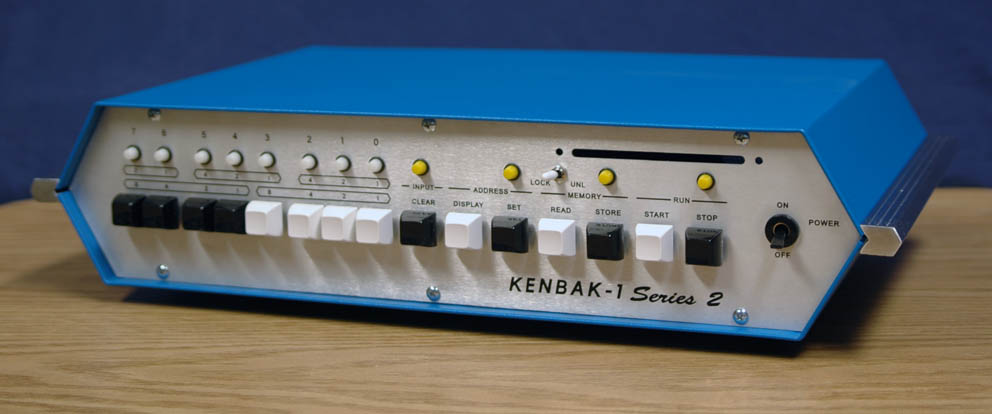
So I wanted to make a low-cost replica, with modern components, which allows, beside reducing the cost and the size of the replica, to appreciate the technological evolution of the last 50 years or so.
My second semester project’s of my DUT coming, I proposed the idea to my friends to make this replica, which allowed me to work on the replica on my project hours and to have access to my school’s equipment to make the PCB.
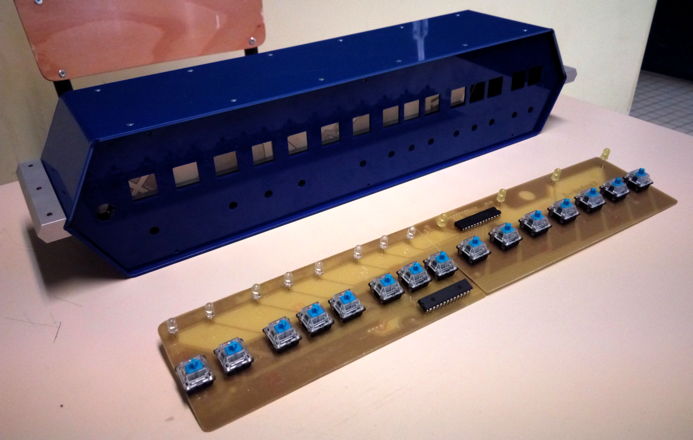
A first prototype was made entirely on breadboards, the electronic circuit being really simple thanks to today’s technology.
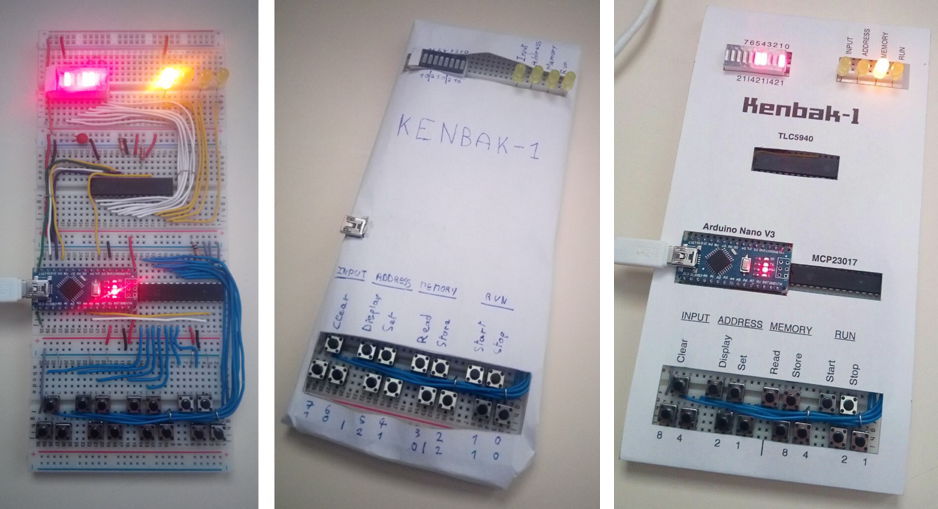
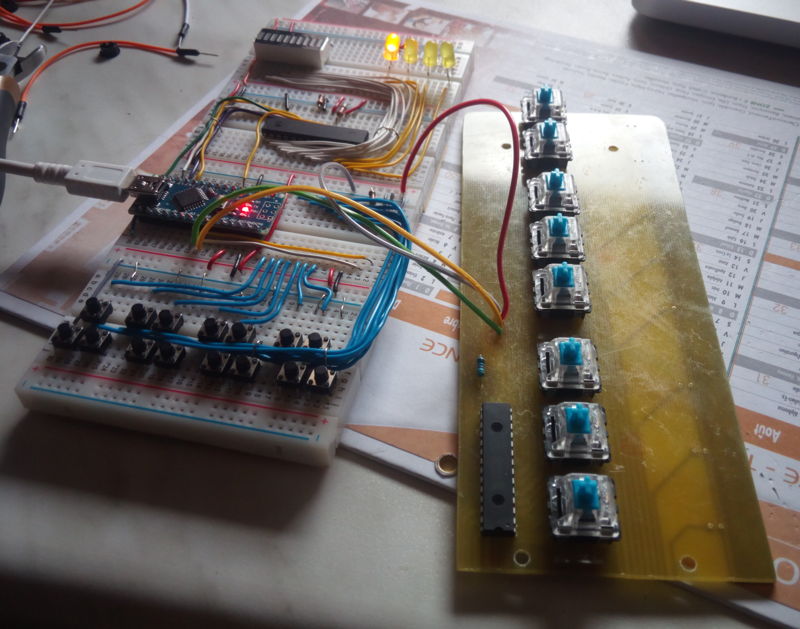
The case is made with high-impact polystyrene, which got thermally folded, with its two aluminum handles milled.
The front plate is in plastic and was also cut with a numerically controlled milling machine. An A3 paper printed, cut, laminated and glued onto the plate serves as an overlay trying to mimic the original metallic front plate of the Kenbak-1.
The keys are mechanical Gateron blue keys that make a lot of noise (vintage!). Keycaps are translucid ones painted from the inside in black or white with acrylic paint.
The mini halogen bulbs were replaced by LEDs with small plastic holders for a great finish.
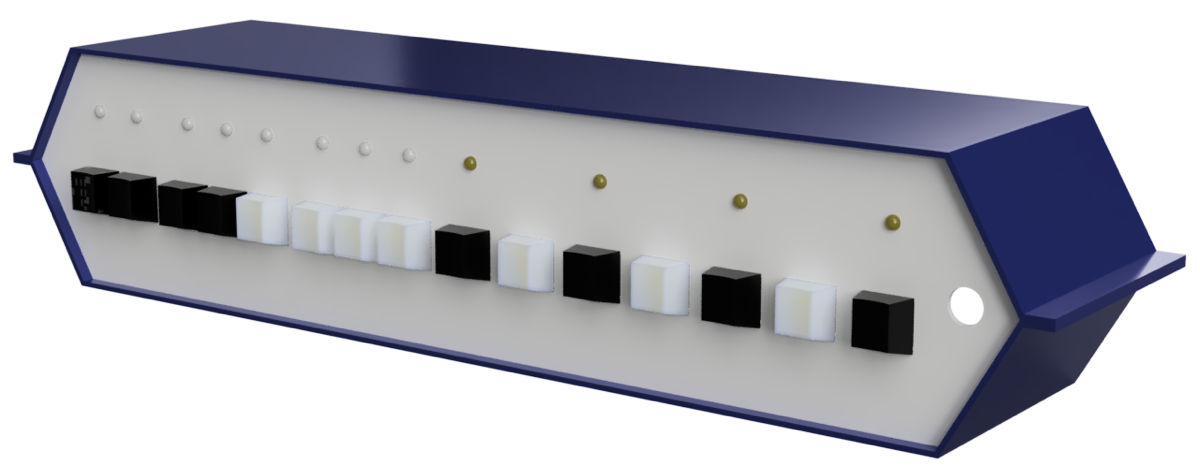
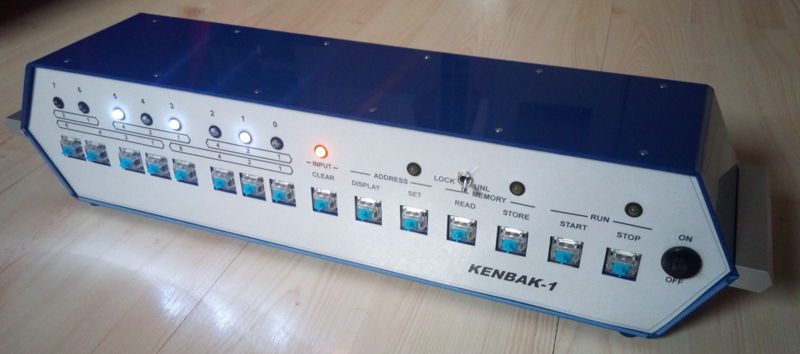
The back plate is transparent and gives access to the micro-USB charging port because yes, that Kenbak-1 is a laptop! You can see through that plate the PCB on which the I/O extender (MCP23017), LED controller (TLC5940), buttons, switches and LEDs are placed. We can also see the Arduino, shamefully mounted on a breadboard (I really must spend some time making a proper motherboard).
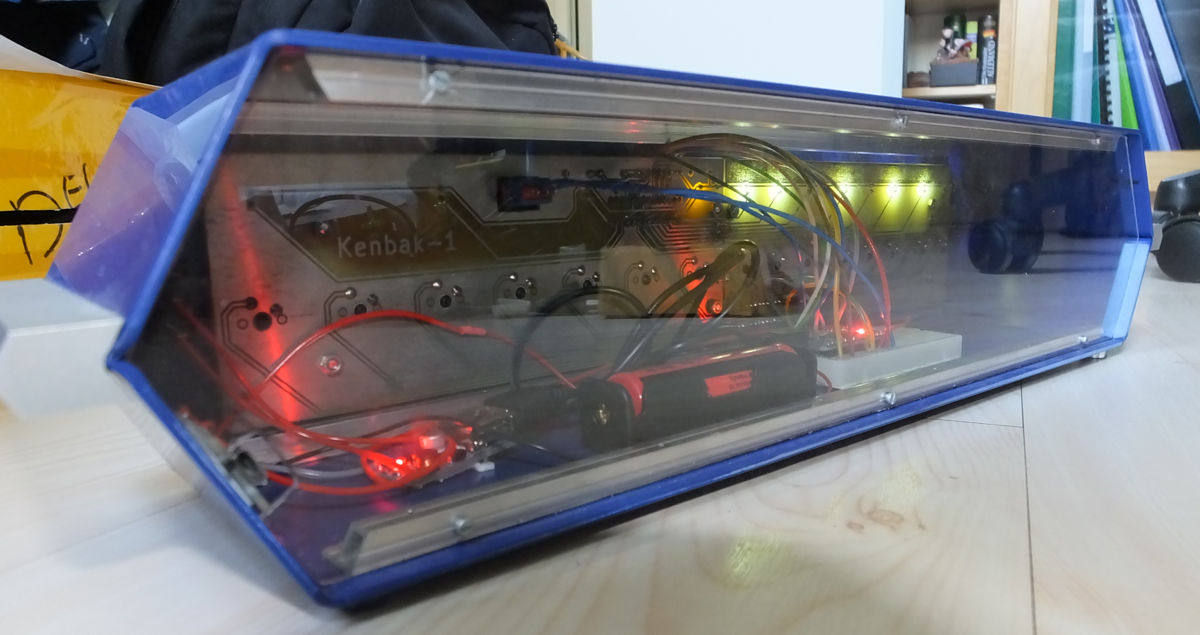
The emulator is entirely handmade and its code is available on the GitHub repo.

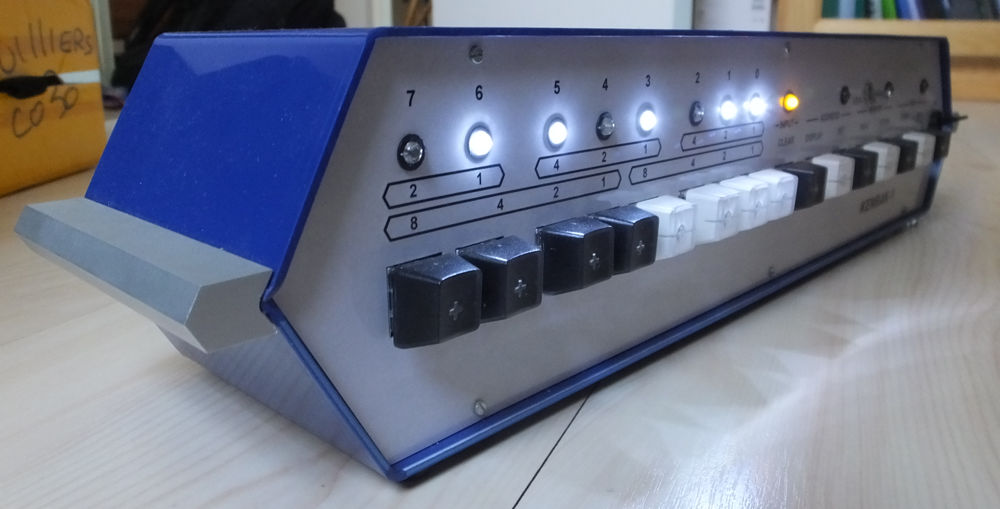
It’s not as amazing as the original (this one is made out of plastic) but it works the same, has the same front dimensions and only costs only about $30. At least now, I have a Kenbak-1 on my shelf that I can program games on when I get bored (okay I rarely get bored…)!
I then wanted to showcase this project at the 2018 edition of the Monts’ Young Inventors and Creators Show (where I already participated in 2016 with the IntelliCasier) with my other projects around vintage computing: The Simple 4-Bit Computer and GilDev Breadboard Computer.
So I made a poster for my booth:

Along with little manuals to help with programming the replica:
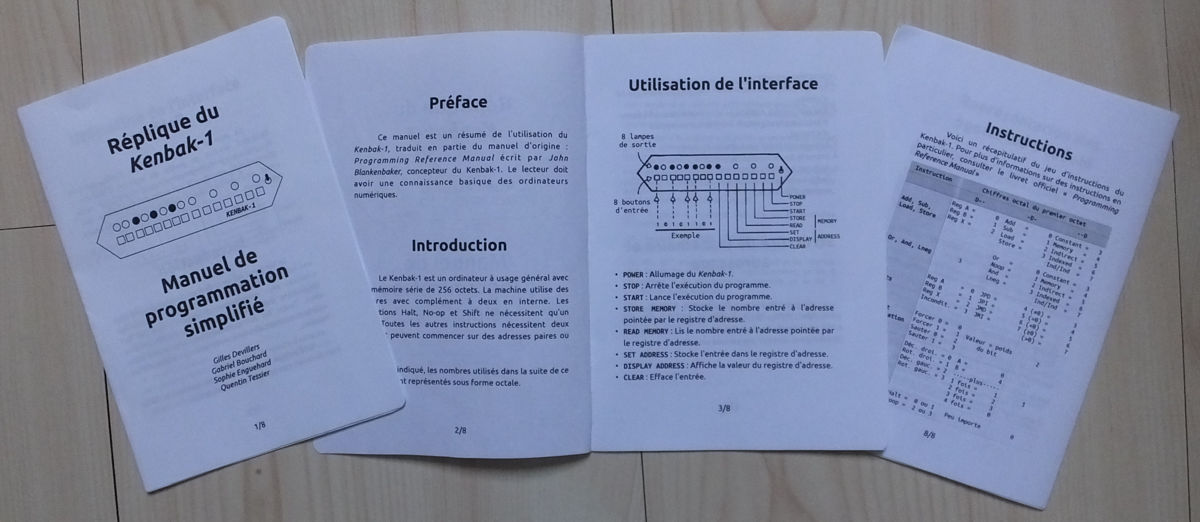
And example programs written on the original Kenbak-1’s programming sheets, just like old times:

Finally, here are a few photos on the event and the awards ceremony (first prize “Senior Solo” category with 300 € from the UTAI, 300 € from STMicroelectronics and a gold medal of the Concours Lépine):
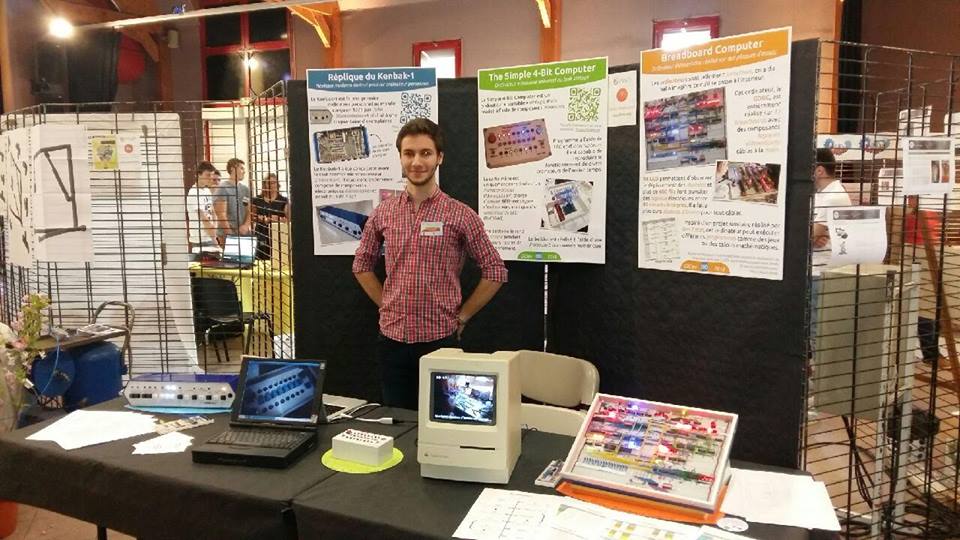



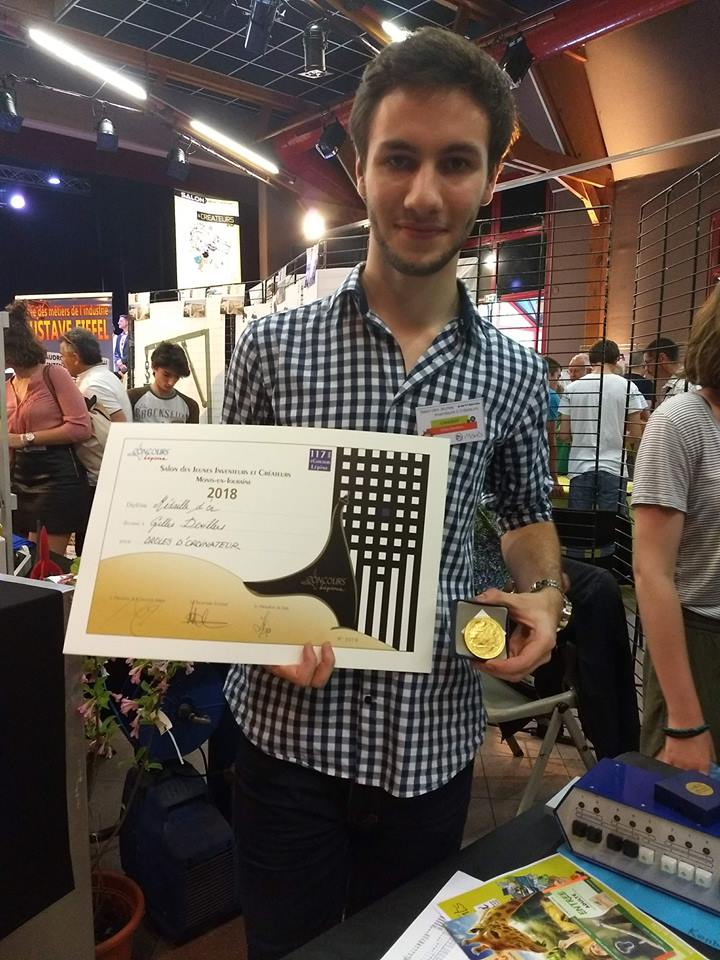
I sent an email to John Blankenbaker, the original Kenbak-1 creator, who replied that he enjoyed my replica and that it brought him great memories of the time he designed it.
He also gave me the contact informations of the son of a Kenbak-1 investor, who now lives in France, and with whom I had the chance to speak about the Kenbak-1.
Finally, here are two other Kenbak-1-inspired computer ideas I had a while ago and that could maybe become alive one day:
The Kenbak-1 Mini is a small version of the Kenbak-1, inspired by the Kenbakuino but with a more genuine style.
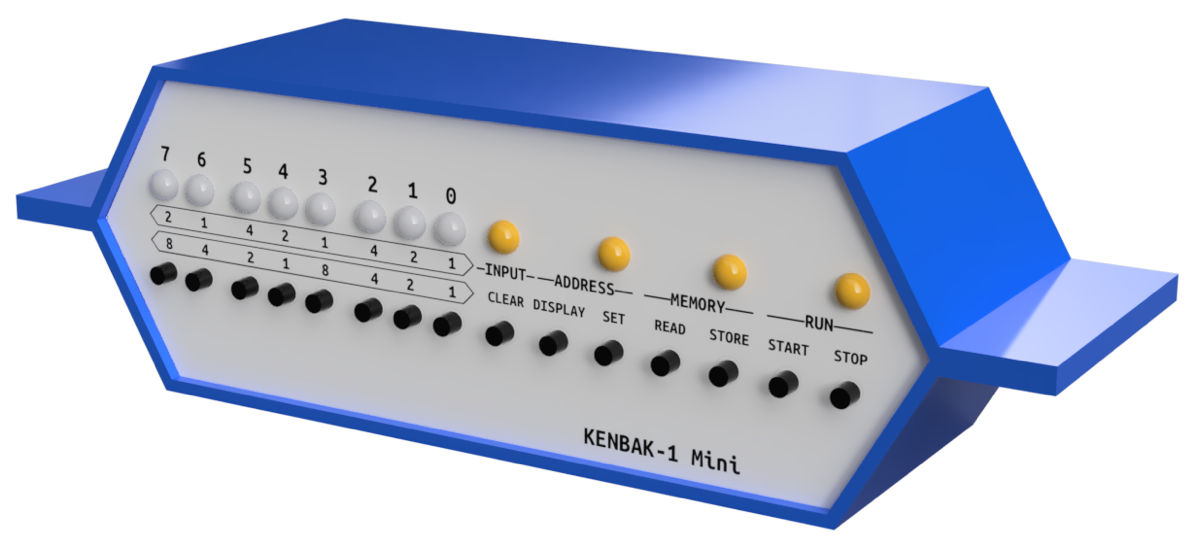
The Kenbakube is a cubic Kenbak-1 which uses colored arcade buttons with LEDs to replace the independant LEDs of the original Kenbak-1.
The idea was to use this device as a Kenbak-1, but also as a control pannel to trigger sounds for example, a bit like a Stream Deck.
Le Kenbakube est un Kenbak-1 sous forme du cube utilisant des boutons d’arcade colorés à LED, qui remplacent les LED indépendantes du Kenbak-1 d’origine.
